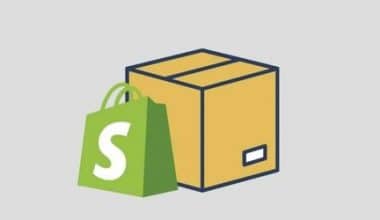As a small-business owner working to keep track of inventory, you know that unexpected surges and lulls in client demand, supply chain snags, and miscategorized products may all make inventory tracking a huge problem. However, this is a nuisance that you should not have to deal with when running your business. To successfully maintain and expand your business, you must be able to check your inventory smoothly and consistently so you know what’s selling, what isn’t, and when to reorder. Here, we’ll go through the basics of inventory check and management, including some software you can use for your business.
What Is an Inventory Check In Business?
Inventory check is the practice of ensuring that all things in a business warehouse or store are accounted for and in the correct quantities. It assists organizations in keeping track of stored products, assessing stock levels, and minimizing loss due to theft or waste. An inventory check is a necessary step in keeping your business running effectively; after all, if you don’t know what you have, you won’t be able to give clients what they require. Inventory checks entail a methodical assessment of items on hand, confirming invoices and purchase orders for accuracy, and refilling shelves as needed. In a nutshell, it’s the secret to effective inventory management!
How To Make A Business Inventory Check
The particular way you check your inventory will differ depending on the size of your business, the products you sell, your budget, and a variety of other considerations. However, here are some high-level measures that every company can take:
#1. Designate someone to be in charge of inventory management.
If your company manages a large amount of inventory with a variety of products (especially perishable things), you may want to hire a full-time inventory manager. If physical inventory is a minor component of your organization, inventory tracking may be delegated to a manager in addition to their other duties.
#2. Choose a system for inventory management.
Depending on the quantity and complexity of your inventory, you may be able to manage it with a spreadsheet (or, in some cases, a notepad). However, in most cases, inventory management software will save organizations time and money while providing more accurate inventory tracking data.
#3. Determine how frequently you will need to run inventory.
If you use inventory management software, your program will handle much of the daily and weekly inventory monitoring for you and keep you up to date via dashboards. Inventory managers can monitor these dashboards on a daily basis and as needed to ensure that everything is in order, as well as prepare reports to share with other stakeholders.
If you manage inventory manually, you should check inventory levels regularly or at least monthly to stay ahead of shortages, oversupplies, and expiring business merchandise. You’ll also need to keep track of when new inventory arrives and when inventory departs in order to manually update stock levels on your spreadsheet.
#4. Install your inventory tracking equipment.
Whether you use software or not, inventory tracking devices (barcode scanners, QR code scanners, RFID scanners, and so on) can assist take a lot of the tedious effort out of inventory tracking.
If you don’t have inventory management software, you can still employ barcode scanners to improve inventory tracking. Instead of syncing with your inventory software, the barcode scanner will just deliver a string of data to the computer or mobile device to which it is connected, effectively transforming your scanner into an input device. This method isn’t as effective as using inventory management software that detects scanned data and automatically updates inventory information, but it is significantly more efficient and accurate than manually inputting strings of data into a spreadsheet.
#5. On a regular basis, audit your inventory tracking.
Unfortunately, inventory management is not a “set it and forget it” business. It’s critical to shake down your inventory monitoring system on a regular (monthly or quarterly) basis to eliminate inefficiencies, double-check accuracy, and identify areas for improvement.
Here are a few points to consider while conducting an inventory tracking audit:
- Physically count your inventory (electronic scanners can be quite helpful here). Check that the totals match those in your spreadsheet or inventory management system. To eliminate discrepancies caused by obsolete information, do this when inventory is frozen (for example, after hours or on the weekend).
- Cycle counts should be done on a regular basis. A cycle count is comparable to a full inventory count, except it is performed on a subset of your inventory to minimize disruption. Most firms conduct cycle counts purposefully, selecting subsections with high value or high turnover rates, for example.
- Contrast inventory numbers with financial data. If your inventory statistics do not match your financial statements, for example, for income from things sold, you should look into it more.
What Is Inventory Management?
The process of ordering, storing, using, and selling a company’s inventory is referred to as inventory management. This comprises raw material, component, and finished product management, as well as warehousing and processing of such commodities. There are various forms of inventory management, each with advantages and disadvantages based on the demands of a business.
Advantages of Inventory Management
One of a company’s most significant assets is its inventory. A company’s inputs and final goods are the heart of its operation in retail, manufacturing, food services, and other inventory-intensive industries. A lack of inventory when and where it is needed might be disastrous.
At the same time, inventory can be considered a liability (though not in the accounting sense). A huge inventory is vulnerable to spoilage, theft, damage, or changes in demand. Inventory must be insured, and if it is not sold in a timely manner, it may be sold at a loss—or simply destroyed.
Inventory management is critical for businesses of all sizes for these reasons. Knowing when to resupply inventory, how much to buy or manufacture, how much to pay, and when to sell and at what price can all become complicated considerations. Small businesses frequently preserve manual inventory records and use spreadsheet (Excel) formulas to determine reorder points and amounts. Larger companies will employ enterprise resource planning (ERP) software. The top organizations make extensive use of highly tailored software as a service (SaaS) applications.
Methods of Inventory Management
Various inventory management strategies will be used by a corporation depending on the sort of business or product being studied. Just-in-time (JIT) production, materials requirement planning (MRP), economic order quantity (EOQ), and days sales of inventory (DSI) are some of these management strategies. There are others, but these are the four most frequent approaches for inventory analysis.
#1. JIT (Just-in-Time) Management
In the 1960s and 1970s, this manufacturing approach was developed in Japan. Toyota Motor (TM) made the greatest contribution to its growth. By maintaining only the inventory required to make and sell products, corporations can save considerable sums of money and decrease waste. This method saves money on storage and insurance, as well as the expense of disposing or dumping excess inventory.
JIT inventory management can be dangerous. If demand unexpectedly increases, the manufacturer may be unable to acquire the inventory required to match that demand, harming its customer reputation and driving business to competitors. Even little delays might be troublesome; if a vital input is not received “just in time,” a bottleneck can occur.
#2. MRP (Material Requirement Planning).
This inventory management method is sales forecast reliant, which means that producers must keep accurate sales records in order to accurately predict inventory needs and communicate those needs to material suppliers on time. A ski manufacturer, for example, may use an MRP inventory system to ensure that materials such as plastic, fiberglass, wood, and aluminum are in stock based on expected orders. A manufacturer’s inability to fulfill orders arises from an inability to effectively estimate revenues and plan inventory acquisitions.
#3. EOQ (Economic Order Quantity)
This model is used in inventory management to calculate how many units a company should add to its inventory with each batch order in order to lower total inventory costs while assuming steady consumer demand. In the model, inventory expenses comprise holding and setup charges.
The EOQ model aims to ensure that the appropriate amount of inventory is ordered per batch, so that a company does not have to place orders too frequently and does not have an excess of inventory on hand. It is assumed that there is a trade-off between inventory keeping costs and inventory setup costs, and that total inventory costs are reduced when both setup and holding costs are reduced.
4. Days Sales of Inventory (DSI)
This financial ratio reveals the average number of days it takes a company to convert its inventory, including work-in-process products, into sales. DSI is also known as the average age of inventory, days inventory outstanding (DIO), days in inventory (DII), days sales in inventory, or days inventory.
The statistic reflects how many days a company’s current supply of inventory will endure, indicating the liquidity of the inventory. A lower DSI is generally desirable because it suggests a shorter time to clear off inventory, albeit the average DSI varies by industry.
Inventory Management Software Available For Small Businesses
#1. Zoho Inventory
Zoho Inventory offers many features. To begin, Zoho provides a rather complete free plan that allows clients to take backorders on out-of-stock items, set up drop shipping, and handle multi-currency transactions. This allows small firms to maintain their inventory organized without having to worry about their restricted expenses.
However, if you choose to increase your plan, you will receive additional features. You can manage several warehouses, maintain serial numbers and batches, and connect various Shopify stores to your account. You’ll also get slick third-party integrations, like as one with Amazon and its Fulfilled By Amazon (FBA) service.
However, Zoho is believed to be best suited to small and medium-sized organizations. Although its plans include a variety of order restrictions, including the recently launched Elite plan (for $239 per month, invoiced annually), which allows for limitless orders, it’s the other features that allow Zoho to cater to small and medium-sized businesses. There are no restrictions on orders, shipping labels, or tracking with the elite plan. It’s an excellent plan for medium-sized enterprises that conduct a lot of shipping and e-commerce, with five Shopify stores and 15 warehouses.
If you run a small business and don’t need to fulfill hundreds of orders per month, Zoho Inventory is a great solution. You can also continue with Zoho when you’re ready to grow.
#2. InFlow Inventory
InFlow Inventory is an excellent inventory management system for small enterprises on a tight budget. The software is incredibly simple to use, with many inventory tracking features automated. It even has a superb mobile app for barcode scanning and keeping your sales agents and inventory manager up to date on stock inventory levels.
While it simplifies inventory management, inFlow limits the number of orders you may handle each month before you’re paid extra. The most expensive plan, for example, includes 10,000 sales orders every month.
#3. Ordoro
When you’re juggling various sales channels, it’s difficult to exercise appropriate inventory management strategies. Fortunately, Ordoro simplifies multichannel selling. You may establish master goods within your inventory system with Ordoro, allowing you to update descriptions, photos, branding, and more across all (or part) of your sales channels at your leisure.
Ordoro also has vendor management tools that make dropshipping simple. You can, for example, assign vendors to certain products in your catalog. Then, if a customer wants certain things, Ordoro may automatically direct the order to the proper vendor, eliminating the middleman (you), increasing supply chain efficiency, and ensuring your consumers receive their items as soon as possible.
Ordoro also allows for atypical inventory management strategies. For example, you can purposefully oversell your goods or limit the amount of in-stock items visible to your clients, both of which create the sense of scarcity and encourage your potential purchasers to finish their purchase. Finally, this allows you to make a higher profit and avoid maintaining costly surplus goods.
#4. Cin7
Most enterprise resource planning (ERP) solutions include modules for every part of your organization (such as accounting, point of sale, inventory, and shipping), and you pay for each module you add to your plan. These expenses build up, making ERP systems prohibitively expensive for all but the largest businesses.
Cin7 breaks the mold by including built-in modules as part of your plan. Cin7 includes B2B ecommerce features, manufacturing features, and even a payment site in addition to a fully integrated POS system. That’s in addition to the barcode scanning, inventory tracking, and order fulfillment functions you’d expect from an inventory management system.
Cin7 also provides advanced demand forecasting and multichannel capabilities, including five-minute cross-channel synchronizing. This ensures that you have a dynamic inventory system that is always up to date, allowing you to achieve proper inventory management with no effort.
#5. Upserve
Upserve offers a dynamic inventory solution to meet the specific needs of restaurants. The software, in particular, focuses more on expiration date tracking and unique supply chain demands (such as chilled transportation) than other inventory control software solutions.
Yes, Upserve is costly, but it offers everything you might want in a single subscription. You can handle your online ordering, POS services, and labor management from numerous locations. Upserve even provides information and tools to help you manage your business more efficiently.
Furthermore, Upserve offers capabilities tailored specifically to eateries. You can, for example, utilize Upserve inventory software to build recipes for the foods you sell, tailoring each recipe with the exact ingredients and amounts required. When you sell that dish, Upserve can automatically deduct the quantity of the items used from your inventory levels. You may also utilize this capability to determine menu prices and identify food waste.
What Is the 80/20 of Inventory?
According to the 80/20 rule, 80% of results come from 20% of efforts, consumers, or another unit of measurement. When applied to inventories, the rule says that 80% of a company’s revenues come from 20% of its items.
How Often Is Inventory Checked?
Depending on the size of the warehouse and the demands of the organization, periodic counts could be performed every two months or every three weeks. This will provide more awareness than yearly or seasonal possibilities, but it will also take more time and effort. Workers must verify that inventory is performed consistently between counts.
What Are the Three Main Inventory Methods?
Inventory valuation methodologies include FIFO (First In, First Out), LIFO (Last In, First Out), and WAC (Weighted Average Cost).
In Conclusion
Inventory control is a critical component of business operations. Inventory management is dependent on the type of business and the type of goods sold. There may not be a perfect kind of inventory management because each has advantages and disadvantages. However, utilizing the most appropriate form of inventory management method can go a long way.
Related Articles
- WHAT IS A CHART OF ACCOUNTS: Definition, Types, Examples & Guide
- INVENTORY MANAGEMENT COMPANIES: Best Service Providers & Software 2023
- ENTERPRISE APPLICATION: Everything You Need to Know About EAS
- STOCK INVENTORY MANAGEMENT: What It Is, Types & Benefits






